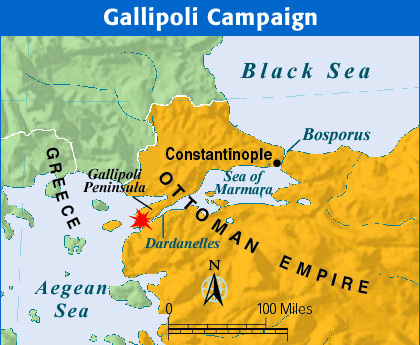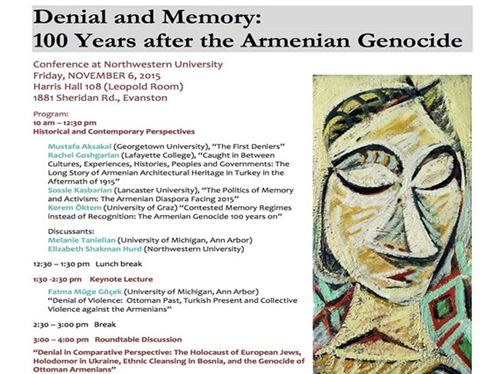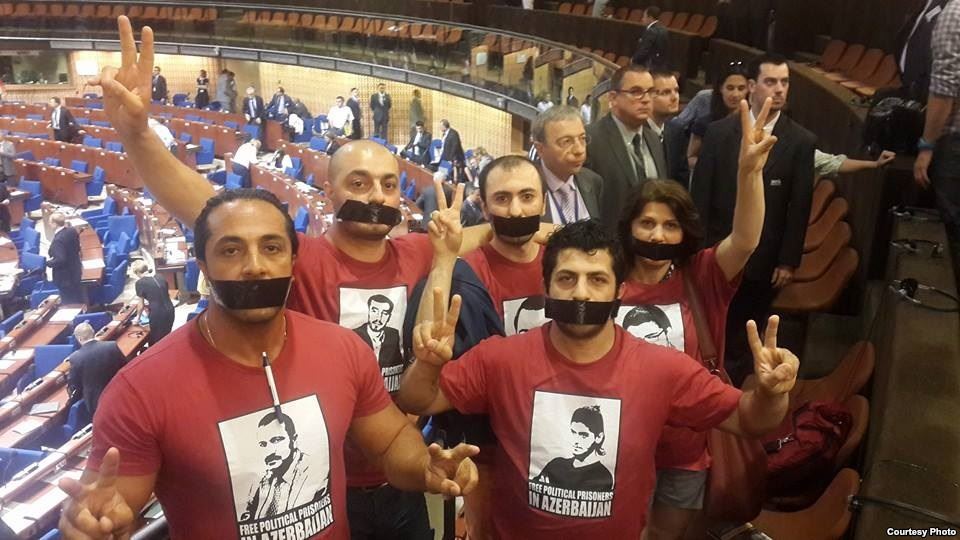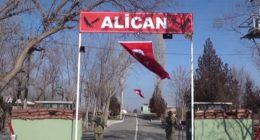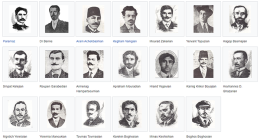By Alan Whitehorn
The Entente naval bombardments of the Dardanelles Straits in February and March and later the amphibious landings at Gallipoli on April 25, 1915 were two interrelated military deployments that gravely threatened the survival of the Ottoman empire. These military battles, in turn, are linked to the Young Turk regime’s draconian decision to arrest several hundred Armenian community and political leaders in Constantinople on April 24, an act that was an opening phase of the Armenian Genocide.
In WW I there were several major battle fronts: Western Europe, Eastern Europe, the Near (Middle) East, and the Caucasus Mountains. In the East, Russia, as the major ally of Britain and France, was battling Germany, Austro-Hungary, and the Ottoman empire. Russia’s troops were engaged in combat from the Baltic Sea in the North, through Eastern Europe, to the Black Sea and Caucasus Mountains in the South. The Ottoman-held strategically key Bosporus Straits, linking the Mediterranean Sea and the Black Sea, were crucial for supplying Russia with munitions and supplies. However, from the outset of the war, the Straits had been closed. The British and French fleets blocked the Dardanelles Straits at the Western end, while the Ottoman empire mined and controlled the Straits elsewhere.
For a number of British and other Entente strategists, the Ottoman empire was perceived to be the weak link in the German-centered military alliance. Winston Churchill, the First Lord of the British Admiralty, was a forceful advocate of attempting a bold naval maneuver to break through the lines of Ottoman naval mines, destroy the shoreline fortresses along the Dardanelles, and sail up the Straits swiftly and decisively to capture the Ottoman capital of Constantinople. In so doing, the strategists expected to be able to knock the Ottoman empire out of the war and strike a key blow against Germany. Drawing upon an unrivalled history of centuries of dominating the oceans of the world, the British fleet seemed more than capable of achieving such a bold and daring naval task.
From February onwards, the British and French fleets commenced their naval bombardments and later sought to penetrate the lines of floating mines. As a result, a state of great apprehension existed in Constantinople amongst the Young Turk leadership. Plans were made to abandon the capital city, if need be. However, after several Entente warships were sunk by mines, the British naval commanders paused, as they were unwilling to suffer the loss of more major warships. They opted not to proceed with the operation by sea alone. Instead, they chose to await for the mounting of a complex amphibious landing at the rugged shores of Gallipoli.
Preparations to assemble the troops, equipment and supplies were substantial and had been underway for considerable time. Troops had been gathered in various locations on the Mediterranean Sea and eventually were forwarded onto islands near the Dardanelles. Increasingly, it was clear to Ottoman and German military officials that a large landing was imminent, although they did not know the exact location. Two hundred Entente ships and about 75,000 troops finally left the port of Mudros on April 23. It was the date they were initially scheduled to land, but were, in fact, delayed due to poor weather conditions. Two days later on April 25. British, French, Australian, and New Zealand troops landed on the Gallipoli peninsula that guarded the entrance to the Dardanelles. An epic new land front was now opened.
In between the night that the Entente fleet had left Mudros and the day prior to their military landings in Gallipoli took place, the Young Turk regime rapidly implemented one of the opening phases of the Armenian Genocide. Working with already drawn up lists of the names of prominent Armenians, the police and military arrested several hundred Armenian community and political leaders in Constantinople throughout the night of April 24th. It was one day before the British and allied landings at Gallipoli. War and genocide are often intertwined and this was particularly evident during the hours between April 24 and April 25. Would the Armenian community leaders have been arrested at that time if the Entente ships and troops had not been about to invade? Certainly, the Armenian community was already being targeted by the Young Turk nationalist regime. But the secrecy, violence, and sense of urgency of major wartime threats made committing such genocidal deeds more feasible.
Many books and articles written about the military battles at Gallipoli note the substantial number of military casualties on both sides. For Australians and New Zealanders these days of battle are heroically identified with ANZAC Day, a day of national mourning and pride. For Turkish citizens, it is a battle that saw a rare military victory in WW I and the emergence of a charismatic Turkish officer Mustafa Kemal who rallied his troops in defence of the empire and who would go on to become Ataturk, the founding President of the Republic of Turkey. Military histories often focus on brilliant commanding officers and brave, often suffering, soldiers, but usually offer less on the societal context of the war. However, in the era of modern ‘total war’ where civilian targets were seen as a key part of a strategy for victory, incomplete accounts of the totality of war are insufficient.
In most of the writings about Gallipoli, civilian deportations and casualties are rarely mentioned. Even more disappointing is the failure to make the important link that the Gallipoli/Dardanelles campaigns had to one of the key phases of the Armenian Genocide – a genocide that would lead to the death of approximately 1,500,000 Armenians. The stark fact is that the number of naval and army personnel who were wounded and died in the Dardanelles and Gallipoli campaigns pales in comparison to the number of civilians who were arrested, starved, tortured, and died in the Armenian Genocide – a genocide that gained significant momentum coinciding with the Entente landings at Gallipoli. For the Young Turk dictatorship the two events were linked in key ways. Amidst foreign military peril and possible Entente military occupation of Constantinople, there was swift and deadly action to target the Armenian Christian ethnic minority for genocide.
******
Alan is an emeritus professor of political science at the Royal Military College of Canada and author of Return to Armenia: Veradardz depi Hayastan.

